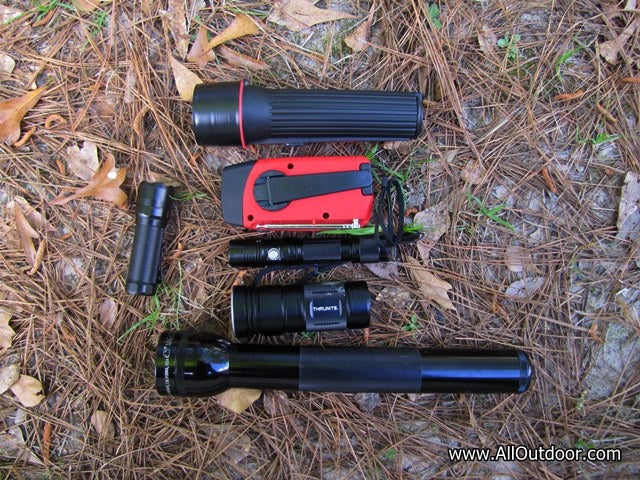Lessons Learned: Flashlights During a Disaster
Kevin Felts 09.14.17

A while back, an article was posted here on AllOutdoor talking about flashlights and how many lumens they produce. Here is the article for reference: The Flashlight Lumen Race.
When flashlights are purchased based on the lumens they produce, the consumer is approaching the situation with a “one size fits all” mindset. Surely, a flashlight that produces 1,000 lumens will be good for reading when the power goes out, right?
To answer the question, no, a 1,000-lumen flashlight will not be good for reading unless you are 100 yards away from the light. Then there is battery life; in a grid-down situation, using a powerful light for small tasks will deplete your battery stockpile.
While reading through Reddit, I came across the following post that reflects some of my thoughts on this topic: Here’s two things I learned from the hurricane after having no power for 40 hours.
I need to prep a better selection of flashlights. Most of my flashlights are high intensity Surefire/Streamlight/Pelican tactical lights that I’ve been issued or bought for use on a firearm. What I didn’t think about though, is how useless those lights are for tasks like reading or searching through drawers/closets where the intense light washes out visibility of details. 375 lumens is overkill for reading anything. I also didn’t realize just how fast they would use batteries.
A two-hour run time is fine for clearing the house in the middle of the night, or running out to the shed for a moment, but getting ready for a hurricane in the dark? Between two lights, we burned through all of our batteries (48) before electricity was restored.
My other flashlights have red lenses to preserve low-light vision, and they also suck for what I needed to do. I (and possibly some of you) need to prep lights that are softer intensity, but still allow for color vision, and consume less battery power. I failed to prepare for the middle ground.
Almost none of the replies offered a reasonable solution.
What is reasonable?
- Reasonable lumens for reading, cooking, and walking around the house.
- Area light, rather than a focused beam.
- Rechargeable.
- No fire hazard.
Personally, I do not consider kerosene or propane lanterns a reasonable solution as they pose a fire hazard. Handheld flashlights are not reasonable, as they do not provide decent area lighting.
A while back an article was posted talking about solar power and rechargeable devices.
By going with a solar panel that charges USB devices, a couple of battery packs, and LED lanterns, you have everything listed above. Some LED lanterns are rechargeable and provide decent area lighting, and just a couple could light up an entire room.
Here is my Hurricane Harvey After Action Review:
After Hurricane Harvey, everything worked excellent. Things went so well, I will be upgrading the solar panel and buying more larger LED lanterns.
So what types of flashlights are you buying? How well are they going to serve you and your family during a grid-down situation?